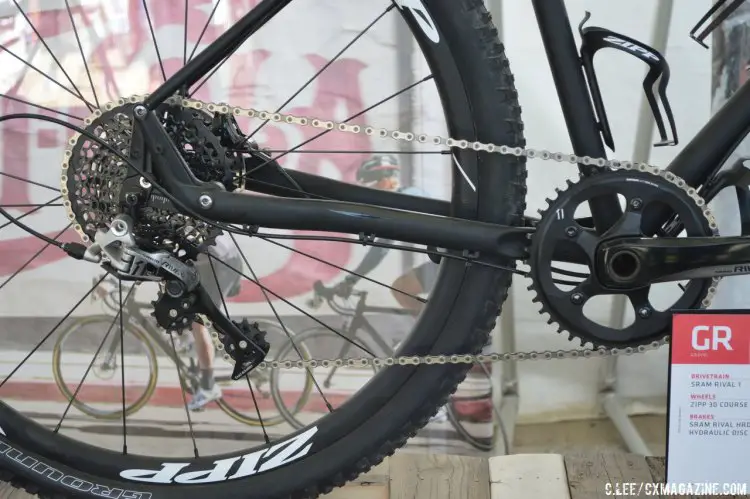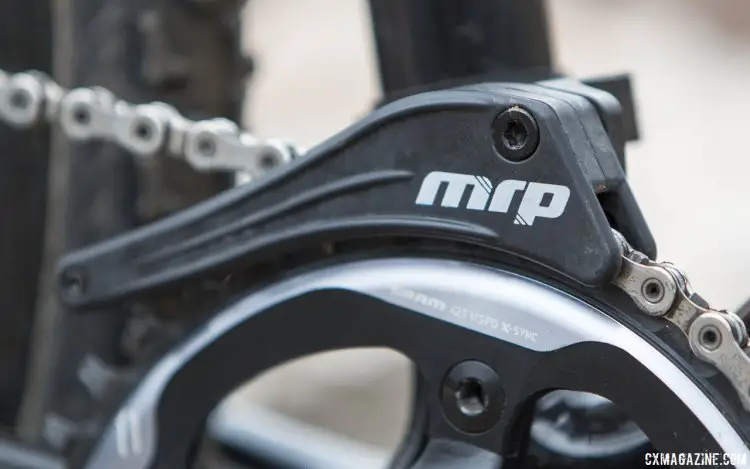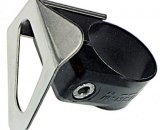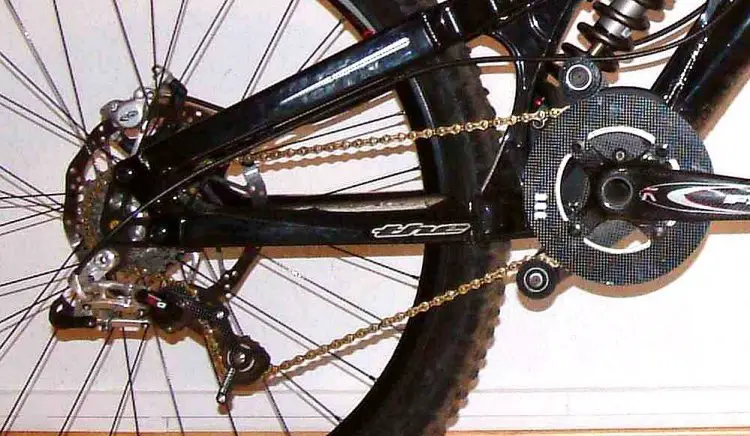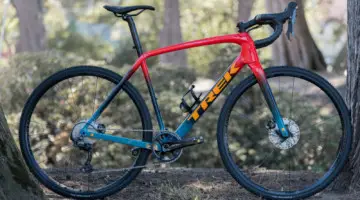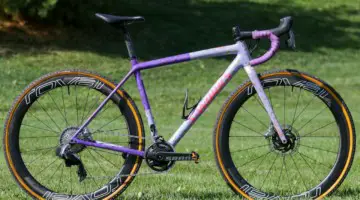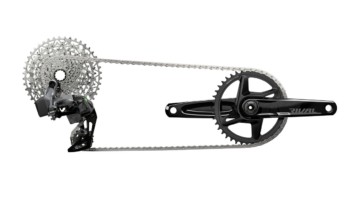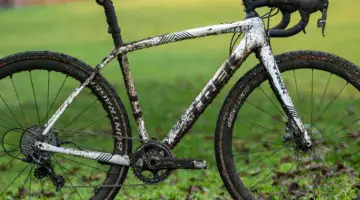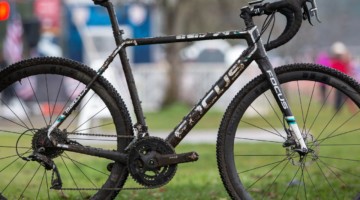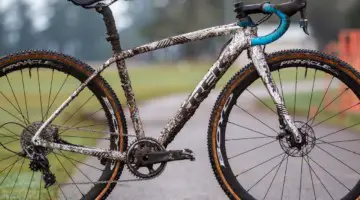No one enjoys a chain drop. In an older Technique Tuesday, we showed riders how to quickly correct a chain drop in the middle of a race without having to manually put the chain back on by hand. Last week, in a Mechanical Monday, we looked at the mechanical problems often associated with dropped chains and how to adjust your derailleurs and identify worn parts to avoid such problems.
Even with a fresh drivetrain and a perfectly-tuned machine, the possibility of dropping your chain is always a lingering possibility, even for the best athletes in the world.
Today, we have resurfaced a Mechanical Monday and updated it to include some of the latest industry advancements, the most recent single ring options, a few DIY projects, and even some accessories you can install on your bike to decrease the chances of dropping your chain. While no system is impenetrable, many of these measures will go a long way in helping prevent a nasty mechanical from ruining your race.
Need a reminder of why this matters despite the best-adjusted drivetrain and top-shelf componentry? Kevin Pauwels will show you in heartbreaking fashion:
New Drivetrains and Drivetrain Upgrades
For those out there who thought about moving to SRAM’s CX1 last year, but were hesitant about price or gear range, SRAM has settled your fears with the new Rival 1 system we first looked at back in April. Although the full system (including the massive range of the 10-42 cassette) will be noticeably heavier than last year’s Force-based CX1 system, the group is a closer equivalent to the current Rival 22, but the alternating wide/narrow teeth of SRAM’s X-SYNC chainring help reduce the treat of dropping a chain.
The downside in going with a narrow/wide chainring? While the single chainring up-front reduces the possibility of dropping your chain, you will have to commit to running a 1x system as the rear clutch derailleur will not work with a double, 11-speed chainring setup.
If you want the advantage of the Force 1 or Rival 1 systems, but you’re unwilling to part ways from your current 10-speed drivetrain, you’re in luck. The rear derailleur and the X-SYNC chainring are backwards compatible with SRAM Exact Actuation shifters, making these components a convenient option for drop-bar and flat-bar cyclocrossers using 10-speed components as well. The chainring, with mud-specific cutaways, come in 38, 40, 42, 44, and 46 tooth sizes, with a compact, 110mm BCD.
But the X-SYNC is not the only wide/narrow chainring option out there for cyclocrossers. Wolf Tooth and RaceFace both have narrow/wide chainrings that work with most five bolt crankarms. Wolf Tooth has been making wide/narrow rings in the USA for as along as anyone, and have various sizes and bolt patterns to help you go singlering.
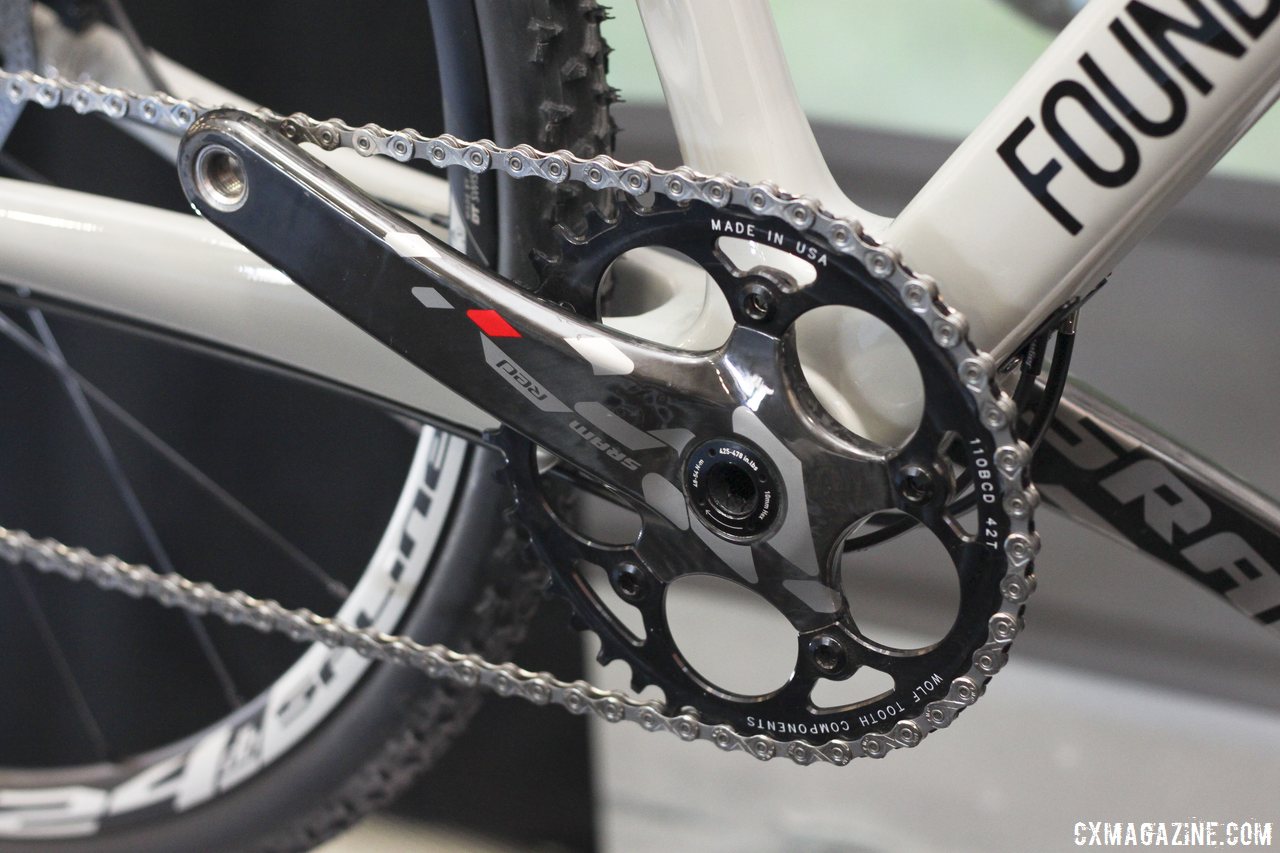
Foundry Cycles showed their 2014 Harrow B1 with a single Wolf Tooth wide-narrow chainring but emphasized it was not exactly to spec. We’ll assume that means CX1 may be in the works. © Cyclocross Magazine
If you’re running 10-speeds, you can pair with a 10-speed SRAM Type 2 mountain bike derailleur and have your own poor man’s Force 1 system.
Of course you can just drop your chain permanently. With a belt drive drivetrain, dropping a chain becomes a thing of the past (although the possibility of dropping a belt becomes a thing of the present). Sure, it means you’re likely going to the dark side of singlespeed racing, unless you pair it with an internally-geared hub. While the belt is smooth when properly set-up and doesn’t require lube, potential buyers should cast away the idea the popular notions that these are fool proof.
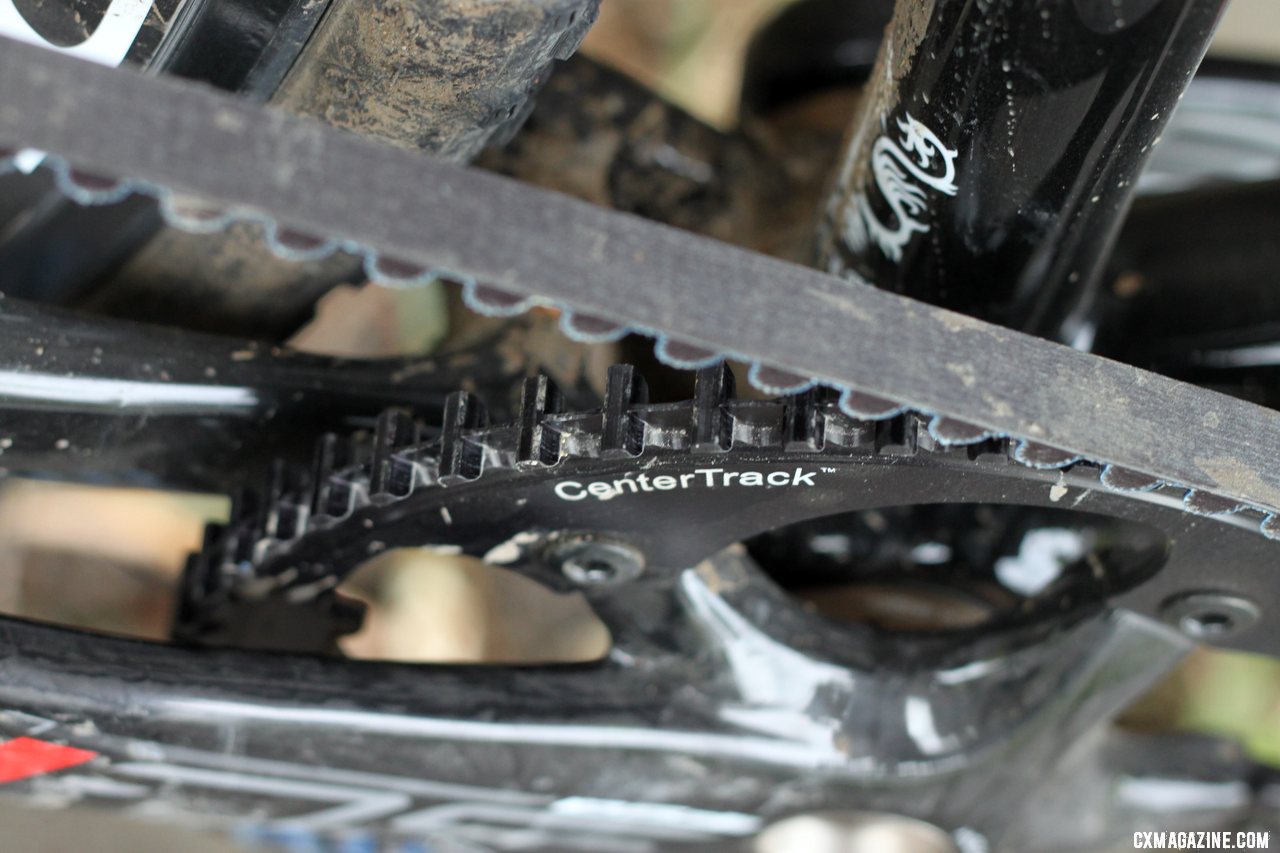
A closeup of the crank and CenterTrack Carbon Belt Drive on a Raleigh carbon singlespeed cyclocross bike. © Cyclocross Magazine
We have found that belt drives still need a patient touch when properly tensioning the belt. You will also need a bike designed for belt drives they obviously don’t come with pins or masterlinks for installation.
Add-ons for Your Current Bike
Chainguards and chain watchers provide even more alternatives for preventing dropped chains. With the increase in ovalizied or oblong-shaped seat tubes on carbon fiber frames, attaching an effective chain watcher becomes problematic.
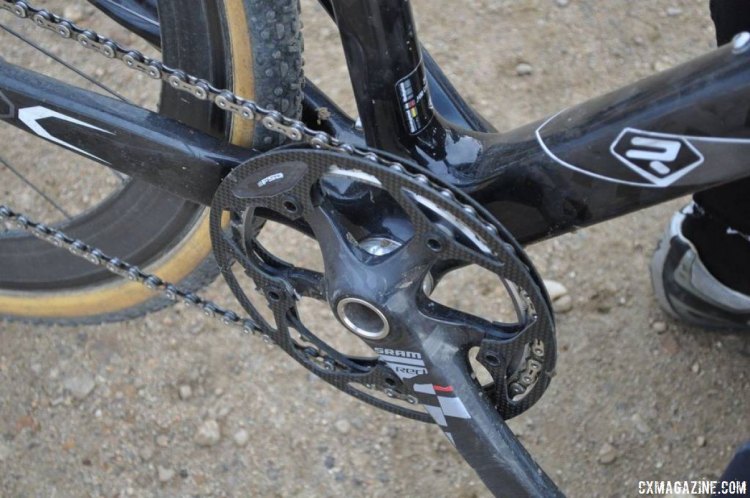
Double chain guards have long been a popular way to eliminate chain drop, and with today’s technology, you won’t sacrifice too much weight.
Dual chainring guards has long been the standard method to avoid dropping your chain. There are plenty of alloy options available, and Portland-based BBG has plenty of options. If keeping grams to the bare minimum takes priority over having a heavy-duty bash guard, there are carbon fiber options, such as FSA’s chainguards as shown in the gravel race photo above, which can accommodate chainrings up to 42 teeth in size.
If you have a steady hand and a bench grinder, lathe or a lot of time on your hands, adding a chainguard can be relatively inexpensive if you don’t mind sacrificing an old chainring (grinding down the teeth of an already worn chainring is the preferred option). Old timers will remember dual guards being the default setup for cyclocrossers just a few decades ago, and many of them eventually find their way onto eBay.
In dry conditions, an inner and outer chainguard may be an ideal option although you may need to hunt for some longer chainring bolts to accommodate for the extra width. In wet conditions, this type of setup can capture plenty of mud, adding resistance to your pedal stroke.
Pro riders like Ben Berden have been using a combination outer guard and inner chain catcher (both from K-Edge) with great success. And although we have only spotted prototypes, such as on Logan Owen’s Nationals-winning bike in Austin, it is clear that K-Edge is developing a specific product to use in conjunction with a narrow/wide chainring.
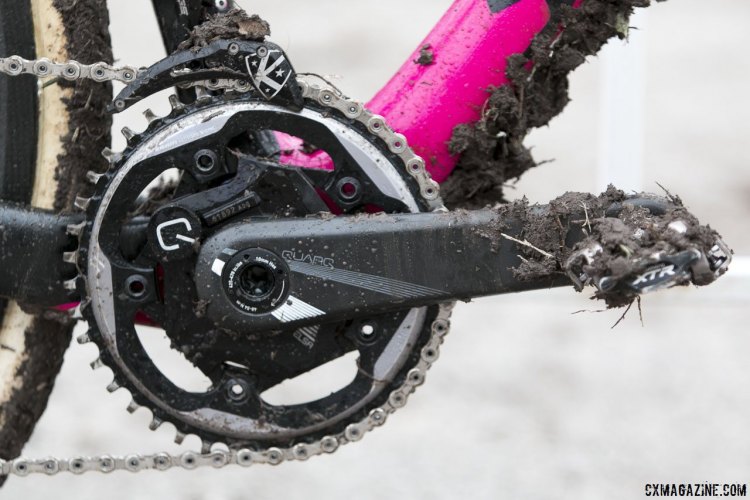
Logan Owen’s Specialized S-Works Crux cyclocross bike with a prototype chainguard. © Cyclocross Magazine.
For those who want something right away, MRP has released a current model guard that we saw Pete Webber using on his way to a 2015 Nationals win. For bikes with standardized seat tubes, there’s a ton of options, from E-Thirteen, Third Eye, Problem Solvers, Paul, K-Edge and N-Gear. There’s also SRAM’s add-on to its derailleurs.
The N-Gear Jump Stop works with round seat tubes. Compared to other systems, such as the relatively flexible chain watcher that comes standard with SRAM Yaw front derailleurs, if the Jump Stop fails to prevent the chain from dropping, it doesn’t feel like you’re untangling string in a game of Cat’s Cradle just to get your chain back on the chainring with your hands.
A clutch-based rear derailleur will also help keep better chain tension, and Shimano and SRAM both have mountain bike derailleurs that are designed to do just that. SRAM 10-speed racers have a good option. As we’ve seen with Marin’s Cortina cyclocross bike, you can run a double setup in the front with a SRAM’s 10-speed Type 2 derailleur. Look for a medium cage length for the typical cyclocross drivetrain. Shimano’s rear mountain bike derailleurs are not compatible with its road shifters, so unless you want to race flat bars, you’re out of luck.
Honey, I Need a New Bike (with a Built-in Chain Catcher)
As bicycle manufacturers continue to make advancements in cyclocross specific design, more companies are understanding the increased likelihood of chain drops in cyclocross races. For the 2015-16 season, Trek and Focus continue to offer frames with preventing mechanical mishaps squarely in mind.
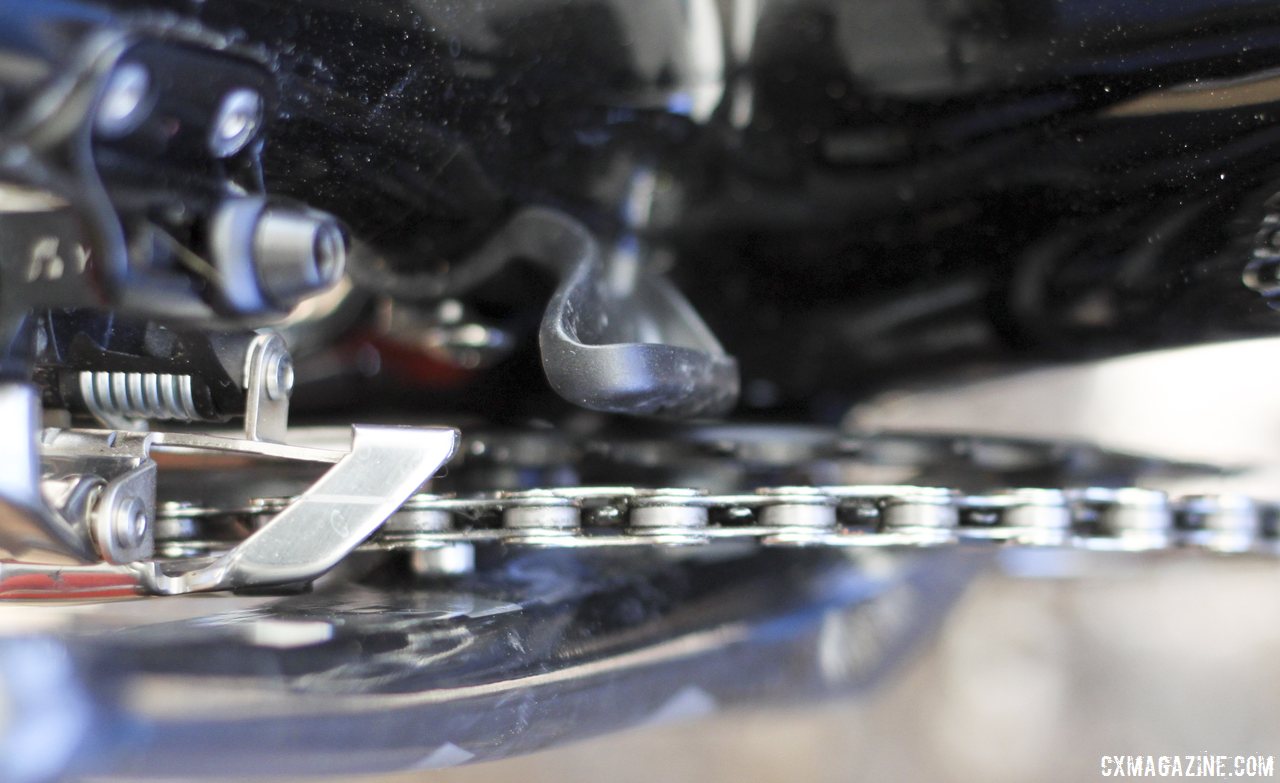
Katie Compton’s Trek Boone 9 cyclocross bike features Trek’s S3 chainguard which is adjustable in angle but not height. © Cyclocross Magazine
In a sneak peek of Issue 25, we previewed the new Trek Boone. Although most people stare at the IsoSpeed Decoupler that has trickled over from the Domane, we also spotted a built-in chain catcher below the front derailleur mount. Trek’s mount solves a major problem with most aftermarket chain catchers: the seat tubes on many carbon fiber frames are rarely cylindrical near the bottom bracket shell, making them difficult to mount an add-on catcher.
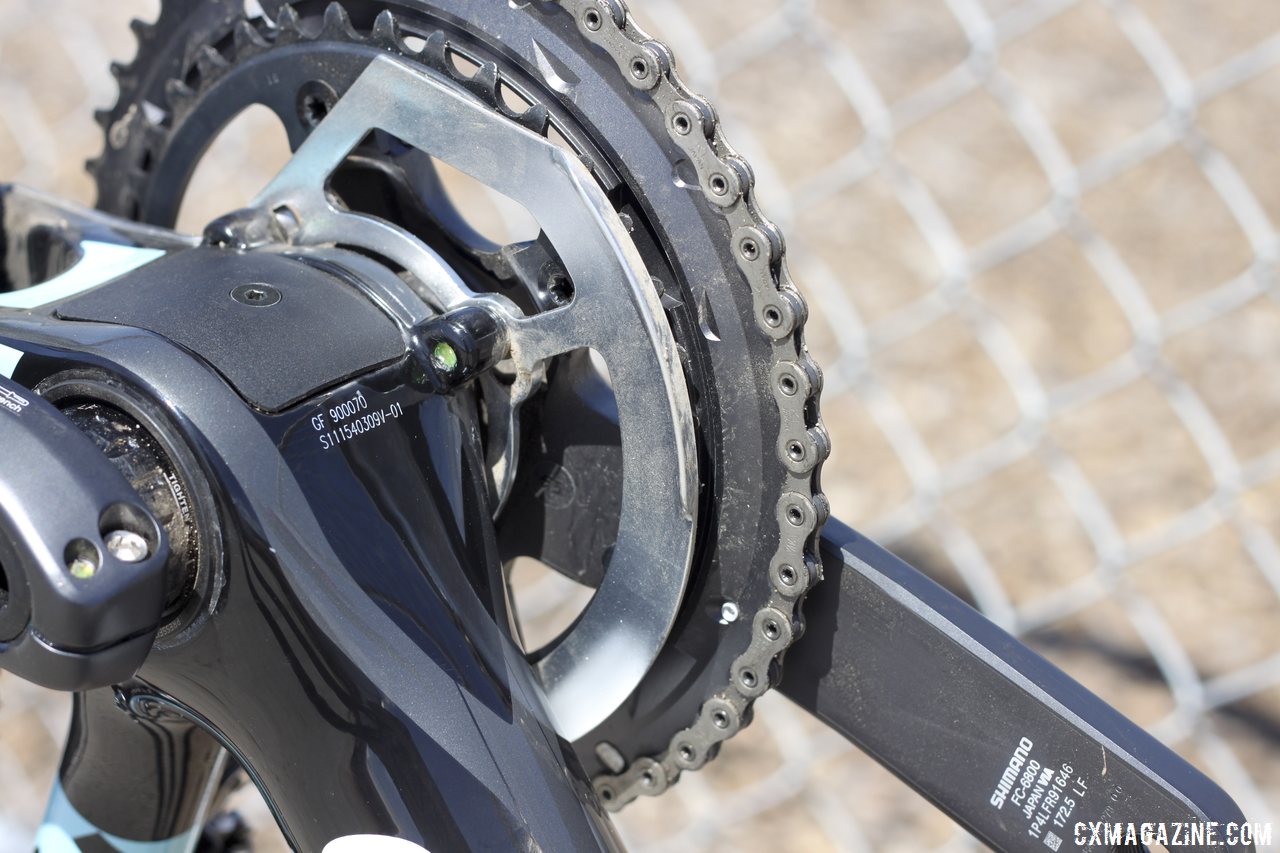
Focus Bikes’ 2015 Mares cyclocross bike with easy-access internally-routed cables and wires, and a massive inboard chainguard. © Cyclocross Magazine
Last Sea Otter, we were able to get a viewing of the 2015 Focus Mares. Speaking of having mechanical issues, the internally routed cables are given some serious protection from the elements with an access port. The mounts by the bottom bracket allow for an inboard chainguard without sacrificing the lower chainring as an attachment.













